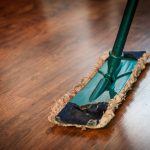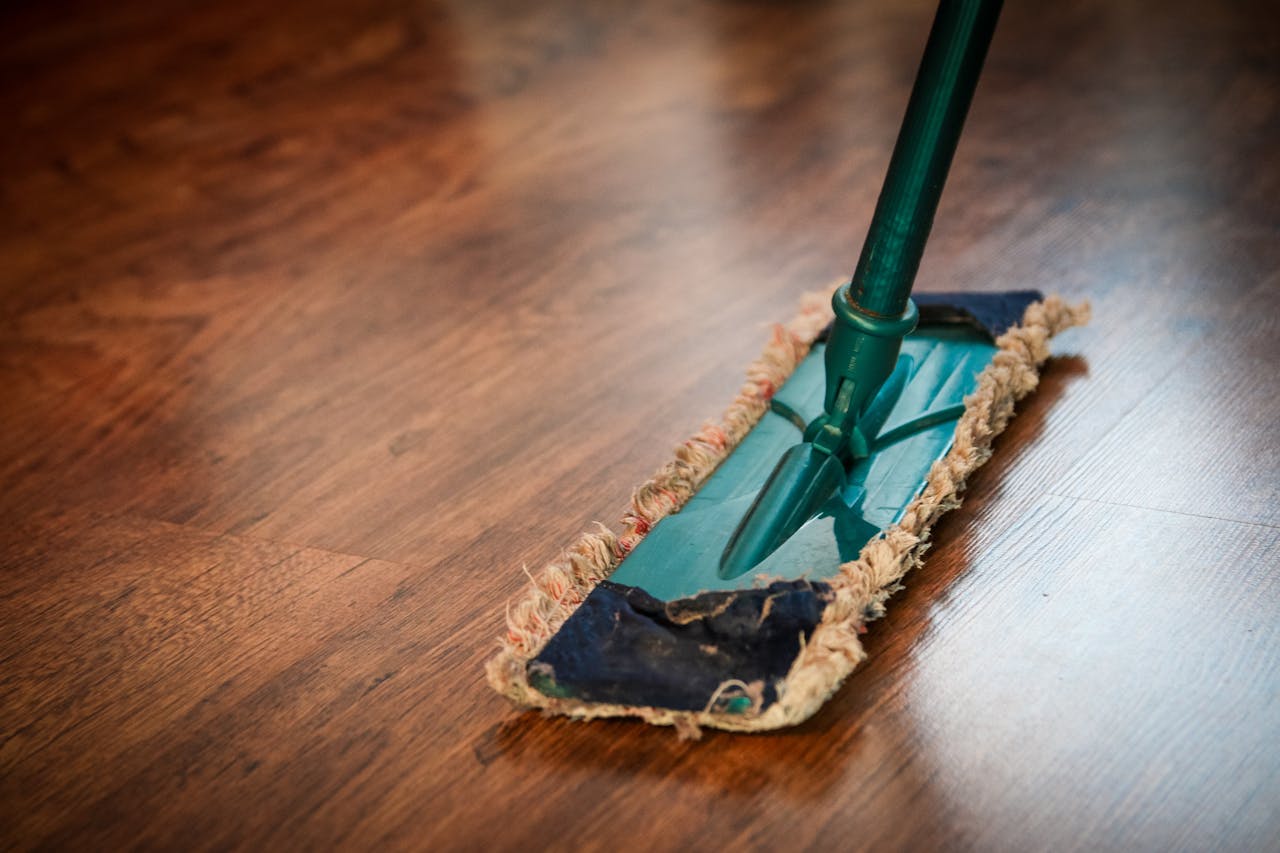Choosing the right flooring for your kitchen is more than just a matter of aesthetics. It’s about finding a balance between style, durability, and practicality. The kitchen is a high-traffic area, prone to spills and stains, and it also needs to withstand the test of time. Your floor, therefore, should not only blend with your kitchen design but also be easy to clean, resistant to water, and durable. Among the many options available on the market, vinyl, laminate, tile, and hardwood are popular choices. Let’s dig deep into the pros and cons of these flooring materials and help you make an informed decision.
Vinyl flooring: a versatile and budget-friendly option
Vinyl flooring has seen a surge in popularity in recent years, and for good reason. This synthetic flooring material is known for its versatility, affordability and ease of installation. Vinyl floors come in a wide array of colors and patterns, allowing you to easily match them with your kitchen cabinets and overall design.
Topic to read : How does having a designated snack zone in the kitchen help in weight loss?
Despite its affordable price tag, vinyl flooring offers remarkable durability. It can withstand heavy foot traffic, resist water and stains, and last for many years with proper care. The vinyl is also easy to clean, making it a practical choice for busy kitchens. However, it’s worth mentioning that vinyl may not be the best option if you’re aiming for a high-end, luxurious look. It can mimic the appearance of wood or tile quite convincingly, but it simply doesn’t have the same feel or longevity as these natural materials.
Laminate flooring: the look of hardwood without the price tag
If you love the look of hardwood but are deterred by its high cost, laminate flooring might be just the solution you need. Laminate is a synthetic flooring material that is designed to mimic the look of wood, tile, or stone. Like vinyl, it comes in a vast array of designs and colors, so you can easily find a style that matches your kitchen décor.
Also to read : What are the top 5 energy-efficient appliances that every slimming kitchen should have?
Laminate flooring is resistant to scratches, stains, and water, making it a good choice for kitchens. It’s also a breeze to clean – simply sweep or vacuum regularly, and wipe up spills promptly to prevent water damage. However, keep in mind that while laminate can closely mimic the look of hardwood or tile, it doesn’t feel quite the same underfoot. Moreover, unlike wood, laminate flooring cannot be refinished when it starts to show wear.
Tile flooring: a classic choice for durability and style
Tile flooring is a classic choice for kitchens. It’s hard to beat when it comes to durability, water resistance, and design versatility. Tiles come in a wide range of materials, including ceramic, porcelain, and natural stone, and each has its unique charm and characteristics.
Tiles are highly resistant to water and stains, making them an excellent option for kitchens. They can also withstand heavy foot traffic and don’t scratch easily. On the downside, tile flooring can be hard and cold underfoot, and it can be slippery when wet. However, with the right choice of tile material and color – think darker colors to hide dirt and slip-resistant finishes – these issues can be mitigated.
Hardwood flooring: a timeless option for a warm and natural look
There’s a reason why hardwood flooring never goes out of style. The natural warmth and beauty of wood can add character and value to any kitchen. Oak is often a popular choice for hardwood kitchen floors due to its durability and attractive grain.
Hardwood floors can be sanded and refinished multiple times, which can significantly extend their lifespan. However, they require more maintenance compared to other types of floorings. They can be damaged by water and may scratch or dent easily, especially softer woods. But with the right care, including regular sweeping and wiping up spills promptly, hardwood floors can withstand the rigors of a busy kitchen and remain beautiful for years to come.
In conclusion, when it comes to choosing the best flooring material for your kitchen, it’s essential to consider not only the aesthetic appeal but also the durability, water resistance, and ease of maintenance. Whether you go for the affordability and versatility of vinyl, the wood-like appearance of laminate, the durability and style of tile, or the timeless charm of hardwood, make sure that the flooring material you choose will meet the unique demands of your kitchen.
Engineered Hardwood: A Durable Yet Stylish Choice
Engineered hardwood flooring is a fantastic option for those looking for the classic appeal of wood without its high maintenance demands. Unlike traditional hardwood, which is made of one solid piece, engineered hardwood consists of several layers of wood, with a top layer of high-quality hardwood. This design gives engineered hardwood excellent stability and resistance to humidity and temperature changes, which are common in kitchens.
Engineered hardwood flooring comes in a plethora of finishes and styles, from oak to maple, to exotic species like Brazilian cherry. This ensures that there is a style to match every kitchen design. It offers a warm, inviting look that other flooring options might lack.
The top layer of engineered hardwood can be refinished if it gets worn or damaged, extending its lifespan and maintaining its stunning appearance. However, it’s worth noting that it can only be refinished a limited number of times, depending on the thickness of the top layer.
While engineered hardwood flooring is more resistant to moisture than traditional hardwood, it is still not entirely immune to water damage. It’s crucial to promptly clean up any spills and avoid excess water. Nevertheless, with reasonable care, engineered hardwood can be a long-lasting and attractive kitchen flooring option.
Luxury Vinyl Plank (LVP): The Height of Comfort and Durability
One of the newer entries in the kitchen flooring market is luxury vinyl plank, or LVP. As the name suggests, LVP is a step up from traditional vinyl flooring, offering a more realistic look and feel, similar to hardwood or stone. It’s an excellent choice for a kitchen, thanks to its incredible durability, water resistance, and ease of maintenance.
LVP is designed with a wear layer that helps it resist scratches, dents, and stains. It’s also waterproof, making it a remarkably suitable choice for a kitchen floor. Furthermore, it’s softer and warmer underfoot than tile and even some woods, adding to the comfort factor.
In terms of design, the sky’s the limit with LVP. It comes in a wide range of colors and styles, including ones that mimic the look of various hardwoods and natural stones. Thanks to its advanced printing technology, it’s sometimes hard to distinguish high-quality LVP from the real thing.
One potential downside to keep in mind is that, while LVP is tough, it’s not indestructible. Sharp objects can gouge it, and it can fade over time if exposed to direct sunlight. However, these issues can be mitigated with careful use and proper maintenance.
Conclusion: Choose Your Kitchen Flooring Wisely
Choosing the best flooring material for your kitchen is a significant decision that can greatly influence your space’s functionality and aesthetics. Each flooring option has its own set of pros and cons, and ultimately, the choice depends on your personal taste, kitchen usage, and budget.
Whether it’s the water resistance and cost-effectiveness of vinyl flooring, the easy clean aspect of laminate flooring, the classic appeal of tile, the timeless beauty of hardwood floors, the durability of engineered hardwood, or the comfort and style of luxury vinyl plank, all options have the potential to transform your kitchen.
Remember, your kitchen floor isn’t just about appearance. It should also stand up to the wear and tear of daily life, be easy to clean, and feel good underfoot. Your choice should reflect the unique demands of your kitchen, ensuring a balance between practicality and design. With careful consideration, you’ll surely find a flooring option that will make your kitchen a truly enjoyable space for cooking, dining, and socializing.






